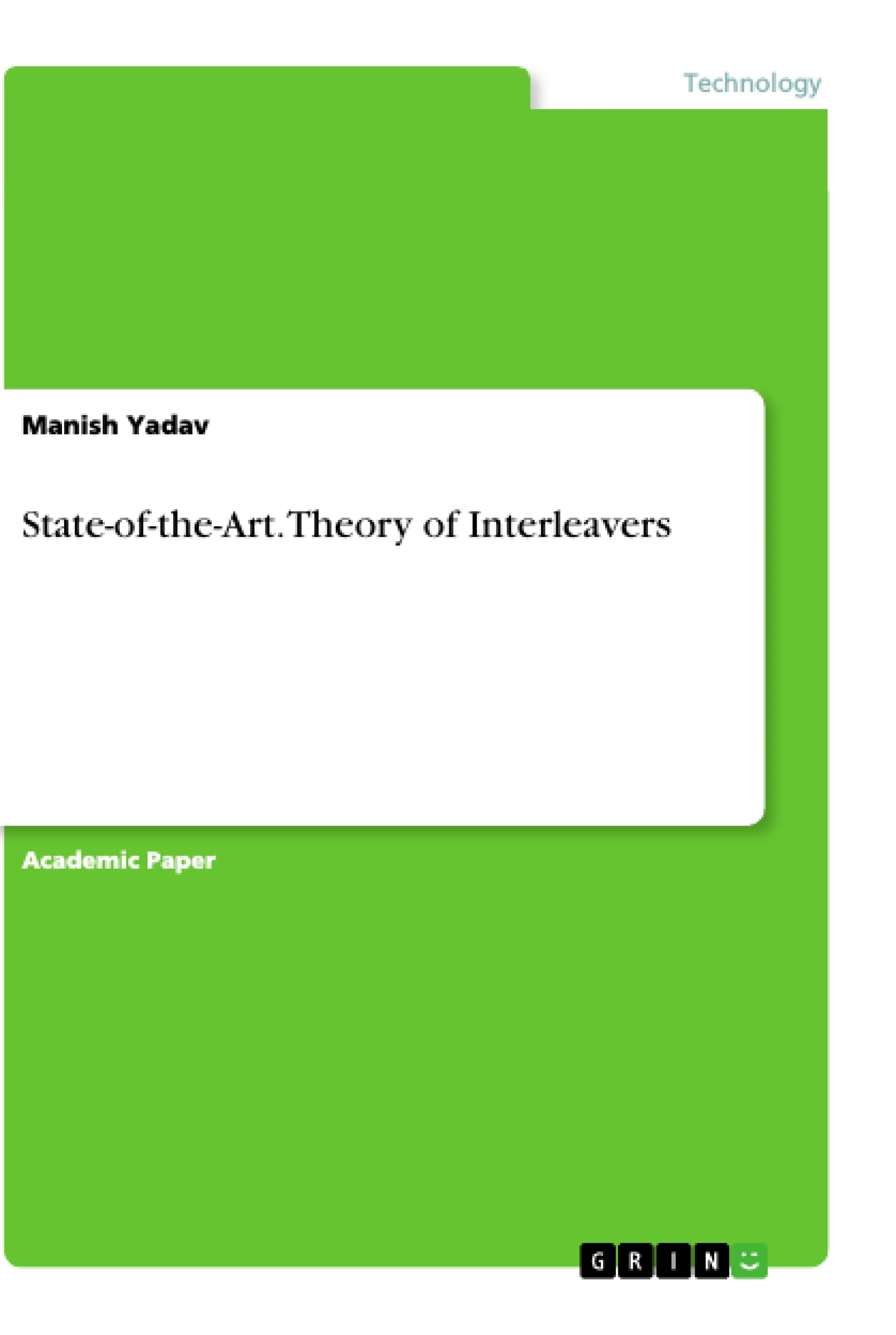Interleavers are used in communication system theory for multiple purposes. In this article, an extensive state-of-the-art on theory of interleavers has been presented. It covers the major developments that occurred in the domain of interleaving and interleavers.
Fifth generation (5G) communication is a giant leap in cellular communication technologies in terms of data rate, connectivity, quality of services (QoS) and use-cases. The communication theories involved in essence include multiple basic building blocks within the architectural framework. Interleaver and interleaving are two important aspects in this context. It is a fascinating journey how these interleavers have been developed in theory and explored in an unlimited and unexpected way. This article provides a summary of this journey. The only aim is to provide ready references and develop brief understanding of this journey for the researchers who are actively involved in this field.
Inhaltsverzeichnis (Table of Contents)
- INTRODUCTION
- EARLY DEVELOPMENTS
- DEVELOPMENTS AFTER 1990s
Zielsetzung und Themenschwerpunkte (Objectives and Key Themes)
This article aims to provide a comprehensive overview of the theory of interleavers, outlining their development and applications in communication systems. It highlights the historical progression of interleaver design, exploring the evolution from early concepts to contemporary advancements, particularly within the context of 5G communication.
- The theoretical basis and evolution of interleaving techniques.
- The role of interleavers in enhancing communication system reliability and performance.
- The interplay of interleaving with error correction coding and data transmission methods.
- The impact of interleavers on communication system architecture and design.
- The integration of interleaving techniques in modern communication technologies, such as 5G.
Zusammenfassung der Kapitel (Chapter Summaries)
- INTRODUCTION: This chapter introduces the concept of interleavers and their significance in communication system theory. It highlights the growing importance of interleavers in the context of fifth-generation (5G) communication, emphasizing their role in improving data rate, connectivity, and quality of service (QoS).
- EARLY DEVELOPMENTS: This section delves into the historical evolution of interleaving techniques, tracing their origins back to the seminal work of Claude E. Shannon in 1948. It discusses key contributions by various researchers who laid the foundation for modern interleaving methods, including Fisher et al., Durstenfeld, Knuth et al., Forney, Ramsey, and Burnett et al. The chapter also explores the development of interleaving techniques for specific applications, such as data storage and transmission.
Schlüsselwörter (Keywords)
The key concepts and terms explored in this article include interleavers, interleaving, communication theory, permutation, shuffling, computer application, inverse tree interleavers, and 5G communication.
- Citation du texte
- Manish Yadav (Auteur), 2020, State-of-the-Art. Theory of Interleavers, Munich, GRIN Verlag, https://www.grin.com/document/933425




